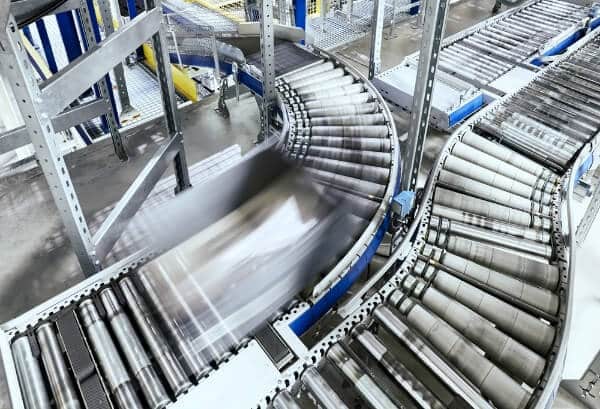Boost Productivity and Efficiency of Conveyor System
A conveyor system is more than any other inventory management tool or industrial equipment. It also can make the work environment more productive and much safer.
Generally, a good quality conveyor system can move components, packaging, and goods swiftly.
However, when it malfunctions, it may ruin inventory, put employees at risk, or disrupt operations. Taking the necessary measures to maintain your conveyor system is essential to avoid these problems.
Regardless of the type of conveyor system you have, here are some ways to boost its efficiency and productivity:
1. Stock Spare Parts
Your conveyor system may malfunction anytime. Stocking spare parts of your conveyor system will prevent downtime and allow you to continue your operations.
If possible, shear pins, cables, and wires must always be stocked. You may also keep spare track roller rails. If you’re wondering where to get quality spare parts, try Reid Supply and other similar companies.
2. Choose And Use Quality Conveyor Belt
Selecting and using the right conveyor belt may greatly maximize your conveyor system’s efficiency and performance. Once you use the wrong one, it may result in inefficiency and expensive disruptions.
Remember that the belt drives your conveyor system and often comes into contact with your products.
This is why you should focus on the right belt surface thickness, style, and installation. In addition, you should consider load requirements and belting material because they can affect your conveyor system’s performance.
When purchasing a conveyor belt, choose one made from robust material and remember your load requirements.
In terms of installation, you can either install it yourself or have it done by professionals, which comes at a cost depending on the kind of installation required.
3. Consider Environmental Conditions
If you want to improve your conveyor system’s efficiency and productivity, you must pay attention to its surrounding environmental conditions.
It’s because the place where you keep your conveyor system can make a difference in the duration and frequency of unplanned downtime.
The harsher the environment, the higher the probability of problems related to corrosion or rust.
If corrosion is a problem for your conveyor system, replace your current chain with stainless steel or zinc-plated conveyor chains.
This replacement will keep your conveyor system functioning smoothly regardless of environmental challenges.
4. Address Shock Loads
For most workplaces, a conveyor system is often exposed to shock loads. Instead of repeated workflow disruptions, you can improve your system’s efficiency and productivity by enhancing its tensile strength.
You can achieve it by installing a better conveyor belt. Welded pins and brushes can also extend your conveyor system’s lifespan, ensuring reduced downtime.
5. Follow The Manufacturer’s Instructions
When improving your conveyor system’s performance, never forget about the manufacturer’s instructions. Ensure that all your employees adhere to the manufacturer’s recommended instructions for maintenance.
If necessary, perform inspections regularly. It’s essential for pulleys and bearings. To keep track of your maintenance activities, ask your team to record all actions taken during inspections.
6. Keep Your Conveyor System Clean
Most companies neglect the importance of cleanliness when it comes to conveyor systems. However, if you want to ensure success as a savvy manufacturer, you must keep your conveyor system clean.
Remember that dust, debris, and other dirt particle buildup may result in issues, such as reduced conveyor lifespan and clogged tubes.
Cleaning your conveyor system regularly can significantly help prevent such problems from occurring. It’s also crucial if you’re working with products that generate dust and airborne particles.
Cleanliness is also more vital when you’re in the food and beverage industry, wherein proper sanitation is a must.
7. Implement Preventive Maintenance
Depending on the conveyor system you use, various functional concerns may happen. For example, roller conveyors used to move parcels may need maintenance different from overhead chain conveyors, which are utilized to transport automobile chassis.
The same goes for pallet conveyors used for transporting massive quantities of merchandise and belt conveyors for transporting volumes of paper.
Some maintenance methods will also be needed if the conveyor systems are used in harsh conditions. For this reason, you must consider implementing preventive maintenance. It’s more recommended than reactive maintenance as it helps prevent damage to your conveyors, which can lead to other issues.
Moreover, it allows you to sort the conveyor system’s issues at intervals and lower costs than waiting for them to malfunction and experiencing more downtime.
Typically, preventive maintenance includes:
- Inspecting components
- Replacing parts with wear and tear
- Upgrading components with better quality alternatives
These can save your company money over time and extend your conveyor system’s life. For the best results, create a preventive maintenance schedule and follow the correct procedures based on the manufacturer’s instructions.
Final Thoughts
A conveyor system plays an important role in many businesses. If you want to keep it efficient and productive, follow the above tips.
By providing proper care and maintenance, you can prevent possible downtime and belt malfunction, which disrupt your daily operations.
